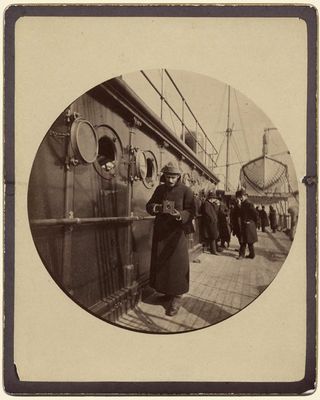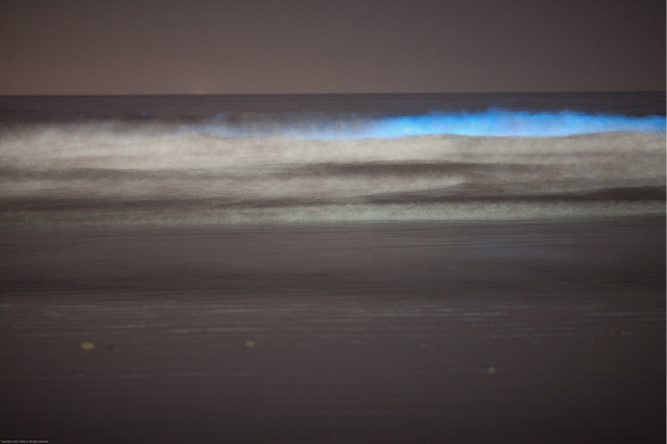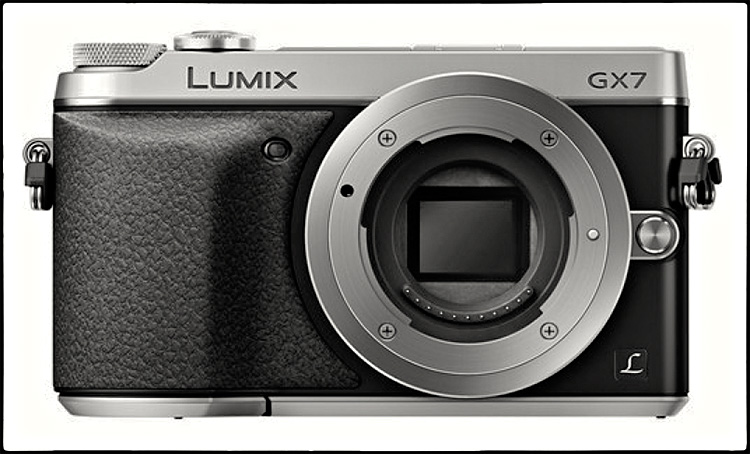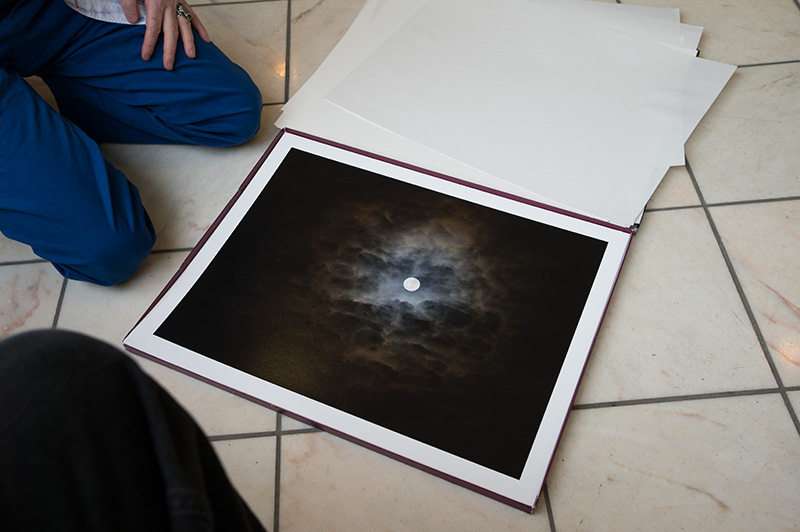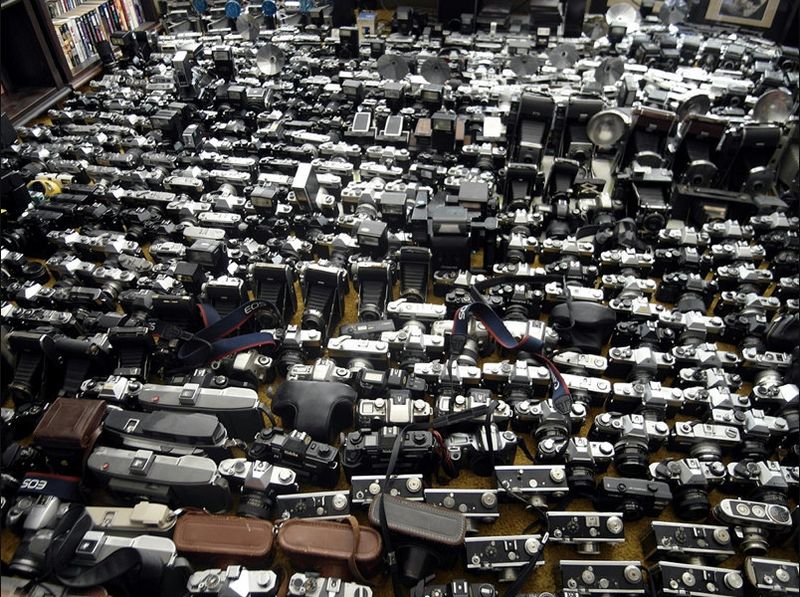If I'm reading the tea leaves right, the reaction to the Coolpix A seems to have traveled about the following course:
- Irritation at the uppity price
- Pleasure at the news with expressions of personal reservation
- Annoyance at what the product is not and disapproval of what it is
- General rejection
- Antipathy toward the product
- Antipathy toward Nikon
- Questions about Nikon's competence, judgment, and direction in general
Now, I could be reading way too much into much too small a sample. Perhaps forums which divide participants up into brand camps are experiencing more enthusiasm and less disapproval. But I have to say the pattern feels familiar...it's quite similar to the reaction I observed to the Nikon 1-Series, the just-discontinued (and future collectible) Pentax K-01, and the Canon EOS M.
It doesn't seem very warranted. Look, Nikon is a leading maker of SLRs, and of lenses and accessories for SLRs. Mirrorless cameras and smartphones seem to be showing they have serious "legs"—might be more than a fad, might prove to be more than a confined market segment—and might be starting to change the entire camera market in ways none of us quite understand yet. But isn't it possible that Nikon doesn't want to pour all sorts of resources into being a big player in an emerging category already dominated by others? In other words, we might be assuming we're seeing strategic moves, but the company might simply be dabbling dilettantishly in a sandbox it doesn't consider its territory.
Second thought: difficult though this might be for the English-speaking world to swallow, we ain't everything. The Nikon 1 was built with the home market in mind; maybe the Coolpix A is too. Or maybe it's tailored to the Chinese; they're an increasingly important market now too.
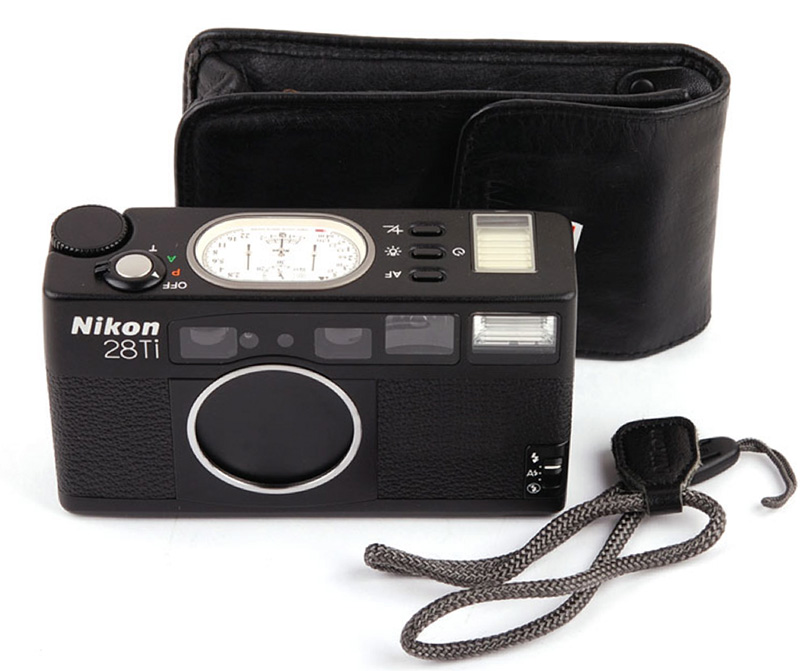 Nikon 28Ti, a "premium point-and-shoot" from 1994, with its delightfully steampunk (but unecessary) "stopwatch" dial panel. This one's for sale right now from Breguet in Hong Kong.
Nikon 28Ti, a "premium point-and-shoot" from 1994, with its delightfully steampunk (but unecessary) "stopwatch" dial panel. This one's for sale right now from Breguet in Hong Kong.
And a third thought: I wish we could not be so harsh on companies that try to raise product quality past market perception. I witnessed an amusing and revealing little scenario in the '90s. Leica released a four-element lens based on an ancient design—the collapsible Elmar-M, 1994–2007—that was hard-sharp but that I found almost offensive for its poor build quality, especially when compared to earlier Leitz collapsible Summicrons. That lens was praised for being economical: despite being ridiculously expensive for what it offered, it was cheaper than any of the same company's other offerings, which made it a "bargain" in the general perception. During that product's lifespan, Nikon released a better lens* of the same basic type (a modified Tessar), the 45mm ƒ/2.8P, 2001–06, that cost something like a third of what the Leica lens cost. Result? Nikon's offering was slammed for being excessively expensive, because it cost so much more than the same company's mass-market, high-value (and Chinese-made, and mostly plastic) consumer lenses of similar focal length. Which created one of those situations that make me chuckle: the shoddier, three-times-as-expensive product was getting praise as a bargain, while, simultaneously, the better-made, one-third-as-expensive product was getting slammed for being too expensive. Few people (well, besides me) thought to compare the Elmar-M to the 45P and conclude that the latter was a bargain.
It's the Volkswagen Phaeton phenomenon. (Ferdinand Piëch's 2002 luxury car, an attempt to threaten Mercedes, has been described as "spectacularly slow-selling" [Car & Driver]). If a company known for expensive products makes a shoddy product, it will be praised for being affordable (cf. the McIntosh C15) and continue to be traded for high prices, but if a company known for value-conscious pricing tries to make a luxury product that's perceived as being too uppity for its neighborhood, it will be treated harshly—even if the product itself is outstanding!**
Sony is struggling in the same handcuffs. The A900 was perceived as aspiring above its label. (Too purist for its roots, too.) Now the RX1 is being subjected to some of the same prejudices. People are slaves to established brand hierarchies. Or perceptions of same. Remember, ladling in the value means leeching out the quality. And I like quality. I liked the 35Ti and the 28Ti back in the day, too—they had quality, even if it wasn't all needed for the photographic results. (They, too, got slammed at the time for being more expensive than necessary.)
So, summing up this post:
- Negative attitudes seem to calcify quickly.
- Just because Nikon is a big player in one area doesn't mean every product is a grand strategic market statement.
- Maybe the Coolpix A is made "for" the Japanese, or someone else other than us entitled English-speakers.
- We shouldn't be such price hawks.
My conclusion: a) as ever, we need to wait for real tests and hands-on reports before coming to judgement; b) the Coolpix A could be a nice option for a certain kind of customer, a sort of 28Ti for today. Regardless, the Coolpix A is just one product. Just because it comes from Nikon doesn't mean it's a major statement of where that major player is going, or what that major player thinks of us. My prescription for the hate: Take a few deep breaths. They're only cameras.
Mike
*I don't care how it tested, I thought its image quality was prettier.
**The exception is (sometimes) when they create a new brand. A Toyota LS400 never would have sold in 1989, but Lexus was allowed to be a different breed.
Original contents copyright 2013 by Michael C. Johnston and/or the bylined author. All Rights Reserved. Links in this post may be to our affiliates; sales through affiliate links may benefit this site.
(To see all the comments, click on the "Comments" link below.)
Featured Comments from:
Keith H: "I feel you have summed up this situation perfectly."
foresmac (partial comment): "I think you're just way off base with this analysis."
Mike replies: And there's the blogger's life in two brief comments.... :-)
MM: "I noticed this phenomenon with the Canon EOS M, which was very similar to the Leica X2. Despite the price difference (Canon: $800; Leica: $2000) and despite the fact that instead of having a fixed lens like the Leica the Canon could accept any of dozens of EOS lenses, guess which camera was pilloried in the blogosphere and forum world as hopelessly misguided and which camera was largely given a free pass?
"I think that photographers who buy multiple expensive items from a given manufacturer (or even merely plan to do so) feel more like shareholders than like customers. Not surprisingly, they're not not shy about speaking out when they think 'their' company is heading in a direction they don't personally like—or offering a product in which they don't have any personal interest.
"Your point about unfamiliarity with other markets is a very important one. I only read online forums in English, and I've often thought that the discussions would be very different if those forums had as many participants from Asian countries as from primarily English-speaking countries and western Europe."
cgw: "Not all criticism of Nikon amounts to splenetic rants. Their recent financials point to problems shared with other older Japanese tech companies: complacency, organizational rigidity, numb accounting, and indifferent market research. At present, North America is the only market that's not suffering. Chinese per capita GNP isn't stellar. Japanese domestic demand isn't enough. Like Canon, Nikon can't see beyond DSLRs. They're making product that doesn't sell strongly without profit-shrinking rebates. The Coolpix A, along with the CX fiasco and stumbling PR in the wake of issues with the D800 and D600, aren't encouraging."
JBerardi: "I can't comment on the wider market, but for me personally, it's absolutely accurate to call the A 'too little, too late.' I've always been a Nikon guy and I've wanted to see a compact camera with DSLR-grade image quality from them for nearly a decade now. Well, I got tired of waiting. About a year ago I picked up a Pany GF2/14mm kit for peanuts and really enjoyed it. Cut to today and I've added a G3 body as well as the 20/1.7 and 45/1.8 primes, and they're all great. And all those pieces together didn't even cost me as much as Nikon is asking for these things. So when the A was announced, I was hardly filled with regret for jumping ship. In fact I felt really smart for not waiting around.
"You know what the real kicker here is? My Nikon DSLR stuff now sits collecting dust. I enjoy my Micro 4/3 stuff more. I clearly prefer using mirrorless cameras. I have access to the small, affordable, high quality primes that Nikon has forever neglected. In their efforts to not introduce compact digital cameras that would compete with their DSLR line, they've effectively driven me away from buying any Nikon body, or any Nikon stuff in general. It's a little like Apple deciding to stay away from the smartphone market because smartphones compete with iPods. Well, either you can undercut your existing products, or you can let your competitors do it for you.
"Again, this is all just a personal account. But still, as far as a personal account goes, one would have to say it's a rather damning one for Nikon."
Thom Hogan: "The question is 'balance.' Is the Coolpix A the right balance of things? Size, capability, lens choice, price, etc.
"Funny that you should bring up the 28Ti. It, too, wasn't the right balance in choices, which is one reason why it sold in low quantities. The camera most of us were using at the time was the much cheaper Olympus XA. It was a better balance. I actually moved to a Minolta (TC-1?, can't remember the name at the moment) after looking at the 28Ti closely. Why? Better balance.
"A carry-everywhere camera is all about balance. If it's not going to get you a shot or compromise the shot or be too expensive to risk for a shot, it's no better than not carrying a camera at all.
"The camera that raised my eyebrows a bit in Nikon's announcement was actually the P330. Nikon fixed the two key problems I had with the predecessor. Might that be enough to get my shirt pocket? Maybe, but the Fujifilm X20 has a viewfinder, which in my experience adds about two stops to my handholding ability (braced against face versus two arms in front of me).
"I remind everyone that cameras are tools, not trophies. The tool has to work for you. My negative assessment of the A on specifications is that it isn't the right tool for most people.
"The complaints I hear from users of existing cameras all have a very common theme: missing something I need; or the corollary of forces me to do something I don't want to do. To get balance right in a tool, designers have to be well connected to users. What strikes me about the A and the criticisms of it is that people are saying that the designers weren't well connected to the users. On the other hand, the P330 shows that Nikon heard the users' complaints. So in a single set of announcements we see both sides of the coin."
William: "Don't co-mingle Nikon hate with disappointment and loss of respect.
"Nikon could have made this camera before Sony, Fuji and others entered the market. That is a disappointment. So the only way Nikon thought of to distinguish its first APS-C compact was to make a pocket camera...another disappointment.
"Steve Jobs said if you are afraid to cannabilize your own products, somebody else will happily do it for you. It seems to me Nikon's primary strategy for the past three or four years was to protect the DSLR cash cow from attackers in the Micro 4/3 and now APS-C mirrorless segment. This perception reduces my respect for Nikon. Where is the vision and leadership? How come the CoolPix A does not have built in Wi-Fi? I have a thermostat in my house with built in Wi-Fi.
"I own about $10k worth of Nikon products. This equipment provides me with all of my non-investment income. Since the X100 came out, I've spent zero dollars on new Nikon products and $3,600 on Fuji X APS-C products (and I will buy two more Fuji XF primes as soon as they are released). This is not Nikon hate. I would have never spent a penny with Fuji if Nikon sold the tools I needed for my personal work."
Alan Fairley: "I think that there is a reservoir of ill-will towards Nikon in
forum-land that has built up from its handling of the D800 and D600 QC
issues that may be feeding into this...."
Mike replies: You got that right, I think. I have, ahem, been hearing from people.

